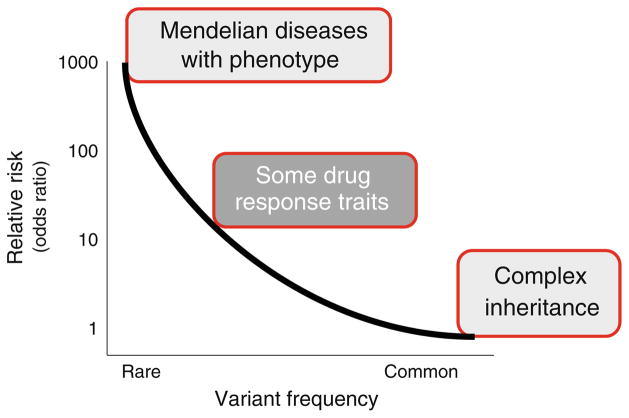Fig. 1.
Relationship between the frequency of a genetic variant and relative risk that it confers. Mendelian disorders, such as long QT syndrome or hypertrophic cardiomyopathy, are caused by very rare genetic variants that confer very high risk for clinical events in patients with manifest clinical phenotypes. At the other end of the spectrum are very common variants that may nevertheless be associated with increased susceptibility to common human traits such as atrial fibrillation or sudden cardiac death, as discussed further in the text. This type of variant generally does not confer risk that is high enough to warrant a change in clinical management. Genetic variants that modulate drug responses may be common and also confer high odds for unusual drug responses; this is likely one example of the general principle that some genetic variants may exert large effects in the presence of environmental triggers (such as drugs). One component of the “genotype–phenotype dilemma” is the problem of assigning risk to patients with rare, disease-associated variants but no manifest clinical phenotype

